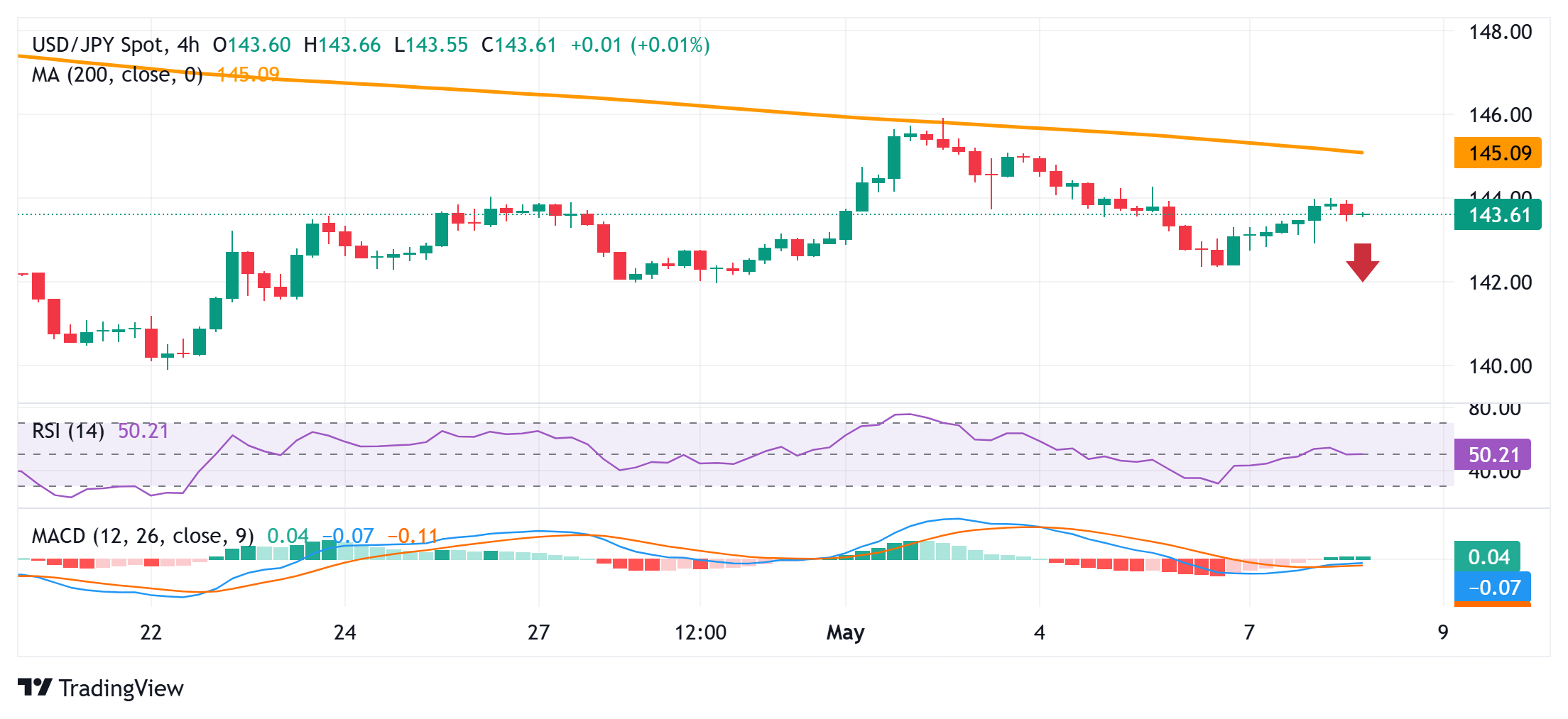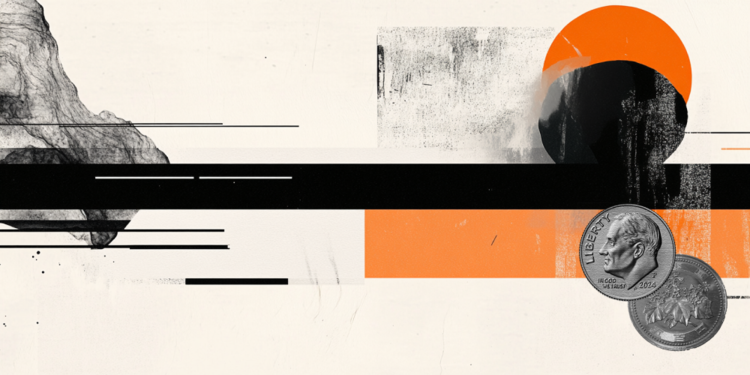- The Japanese Yen ticks lower on Thursday, though the downside potential seems limited.
- Bets that the BoJ will hike rates in 2025 and trade uncertainties could underpin the JPY.
- The Fed’s hawkish pause seems to act as a tailwind for the USD and the USD/JPY pair.
The Japanese Yen (JPY) reverses a modest Asian session uptick against its American counterpart, though any meaningful decline seems elusive amid bets that the Bank of Japan (BoJ) will hike interest rates further in 2025. The expectations were reaffirmed by minutes from the BoJ’s March meeting, indicating that the central bank remains ready to tighten further if economic and price outlooks hold.
This, along with fading hopes for a quick resolution to the US-China trade war, should support the safe-haven JPY. Meanwhile, the Federal Reserve’s (Fed) hawkish pause on Wednesday keeps a floor on the US Treasury bond yields and the US Dollar (USD), acting as a tailwind for the USD/JPY pair. Traders, however, seem reluctant ahead of US President Donald Trump’s press conference at 14:00 GMT.
Japanese Yen bulls turn cautious after Trump signaled that he will announce a major trade deal on Thursday
- Minutes from the Bank of Japan’s (BoJ) monetary policy meeting held on March 18-19 revealed that the central bank remains ready to hike interest rates further if inflation trends hold. Policymakers, however, stressed caution due to global volatility on the back of heightened economic uncertainty stemming from US tariff policies.
- Meanwhile, BoJ Governor Kazuo Ueda said that he is mindful of the impact of the rising food prices on underlying inflation. Furthermore, expectations that sustained wage hikes will boost consumer spending and inflation in Japan suggest that the BoJ may not abandon its rate-hike plans altogether and tighten further in 2025.
- US President Donald Trump tempered hopes for a quick resolution to the US-China trade war by saying that he was not open to lowering the 145% tariffs imposed on China. Trump added that he is in no real hurry to sign any deals, though he said that he will announce a major deal with a big, highly respected country later today.
- On the geopolitical front, Russia and Ukraine engaged in a wave of strikes on Wednesday, ahead of Russian President Vladimir Putin’s unilateral three-day ceasefire, which came into force earlier this Thursday. Furthermore, the Israeli military said that it had fully disabled Yemen’s main airport in the capital, Sanaa, which is controlled by the Houthis.
- The US Dollar bulls struggle to capitalize on the previous day’s move higher despite the Federal Reserve’s signal that it is not leaning toward cutting rates anytime soon. In fact, Fed Chair Jerome Powell said that there is a great deal of uncertainty over US trade tariffs and that the right thing to do now is to wait for further clarity.
- Traders now look forward to the US Weekly Initial Jobless Claims, due for release later during the North American session. The focus, however, is Trump’s press conference at 14 GMT in the Oval Office, which will play a key role in influencing the broader risk sentiment and drive demand for the safe-haven JPY.
USD/JPY needs to surpass 144.25-144.30 immediate hurdle to support prospects for further appreciation

From a technical perspective, the intraday failure near the 144.00 mark favors the USD/JPY pair amid still negative oscillators on the daily chart and against the backdrop of last week’s rejection near the 200-period Simple Moving Average (SMA) on the 4-hour chart. Some follow-through selling below the 143.40-143.35 immediate support will reaffirm the negative outlook and drag spot prices below the 143.00 mark, back towards the 142.35 area, or the weekly low. This is followed by the 142.00 round figure, which, if broken, could make the currency pair vulnerable to weakening further.
On the flip side, the 144.00 mark might continue to act as an immediate hurdle ahead of the 144.25-144.30 supply zone. A sustained strength beyond the latter might trigger a short-covering rally and allow the USD/JPY pair to reclaim the 145.00 psychological mark. The momentum could extend further towards the 200-period SMA on the 4-hour chart, currently pegged near the 145.25 region, en route to last week’s swing high, around the 146.00 neighborhood.
Tariffs FAQs
Tariffs are customs duties levied on certain merchandise imports or a category of products. Tariffs are designed to help local producers and manufacturers be more competitive in the market by providing a price advantage over similar goods that can be imported. Tariffs are widely used as tools of protectionism, along with trade barriers and import quotas.
Although tariffs and taxes both generate government revenue to fund public goods and services, they have several distinctions. Tariffs are prepaid at the port of entry, while taxes are paid at the time of purchase. Taxes are imposed on individual taxpayers and businesses, while tariffs are paid by importers.
There are two schools of thought among economists regarding the usage of tariffs. While some argue that tariffs are necessary to protect domestic industries and address trade imbalances, others see them as a harmful tool that could potentially drive prices higher over the long term and lead to a damaging trade war by encouraging tit-for-tat tariffs.
During the run-up to the presidential election in November 2024, Donald Trump made it clear that he intends to use tariffs to support the US economy and American producers. In 2024, Mexico, China and Canada accounted for 42% of total US imports. In this period, Mexico stood out as the top exporter with $466.6 billion, according to the US Census Bureau. Hence, Trump wants to focus on these three nations when imposing tariffs. He also plans to use the revenue generated through tariffs to lower personal income taxes.

